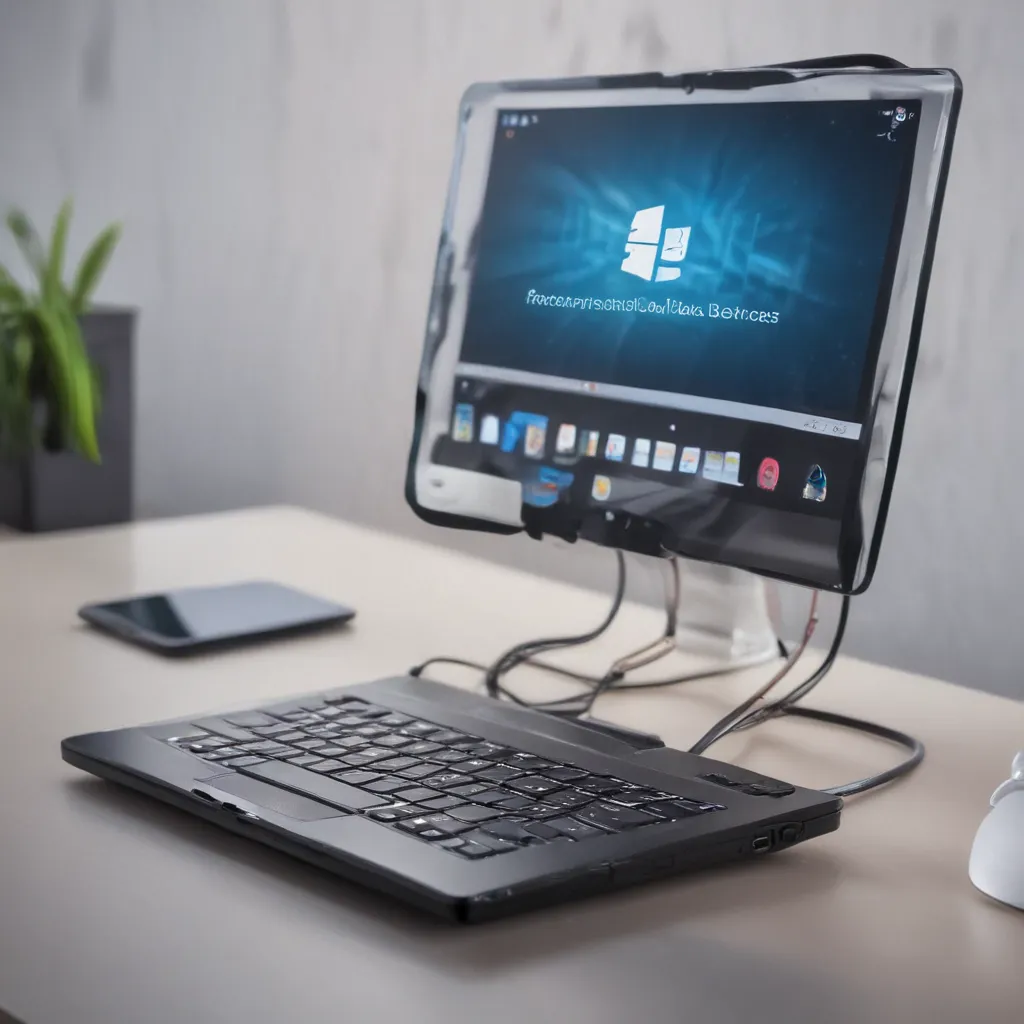The Rise of Digital Hoarding
Remember the good old days when we used to have just a box or two of keepsakes and photos stashed away in the attic? Those days are long gone, my friends. In this digital age, we’ve become true masters of digital hoarding. Our laptops, external hard drives, and cloud storage accounts are bursting at the seams with precious memories, irreplaceable documents, and, let’s be honest, a whole lot of junk.
But what happens when one of those digital repositories becomes inaccessible? Panic sets in, your heart starts racing, and the all-too-familiar feeling of dread creeps in. “Oh no, not my photos!” you might think. “My dissertation is on there!” Well, my fellow digital hoarders, take a deep breath – there’s hope.
Diagnosing the Issue
The first step in recovering data from an inaccessible device is to understand what’s causing the problem. Is it a mechanical failure, a file system corruption, or something more sinister like a cyberattack? The symptoms can vary, but a few common signs include:
- The device not being detected by your computer
- Error messages like “disk is not formatted” or “raw file system”
- Sudden loss of storage capacity
- Unusual noises coming from the device (for physical drives)
If you’re experiencing any of these issues, it’s crucial to stop using the device immediately. Any further attempts to access the data could inadvertently make the problem worse. [1]
Cloning and Imaging to the Rescue
Now that you’ve identified the issue, it’s time to take action. The most important step is to create a clone or image of the affected device. This essentially creates a snapshot of the drive, allowing you to work on the copy instead of the original. [2]
There are a few tools that can help with this, like ddrescue, HDDSuperClone, and DMDE. These are designed specifically for data recovery and can handle even the most stubborn of drives. The key is to use the shortest connection possible, like a direct SATA connection, to minimize any further stress on the device.
Once you’ve got that backup, you can start exploring your options for data recovery. Just remember, the more you try to access the original device, the higher the chances of further damage. [3]
Recovering the Data
With your trusty clone or image in hand, it’s time to start the recovery process. Depending on the nature of the issue, you have a few avenues to explore:
Partition and File System Recovery
If the problem is with the partition table or file system, tools like TestDisk and DMDE can be your lifesavers. These utilities can often repair corrupted partitions and file systems, giving you a fighting chance of accessing your data. [4]
File Carving
When the file system is beyond repair, you may need to resort to file carving. Tools like PhotoRec and Foremost can scan the drive for file signatures and attempt to recover your documents, photos, and other files, even if the original folder structure is lost. [5]
Specialized Recovery
Sometimes, the nature of the data loss requires a more specialized approach. For example, if you’ve lost video files from a GoPro, you might need a tool specifically designed to reconstruct that type of fragmented data. [6]
The key is to experiment with different tools and techniques, keeping a close eye on the drive’s health. If things start to go south, it’s time to call in the professionals. [7]
The Last Resort: Professional Data Recovery
Let’s be honest, sometimes we just can’t DIY our way out of a data loss crisis. When all else fails, it might be time to consider a professional data recovery service. These experts have access to specialized equipment and techniques that can often revive even the most stubborn of drives.
Sure, it might cost you a pretty penny, but if that data is truly irreplaceable, it could be worth it. Just be sure to do your research and find a reputable service that has a track record of success. [8]
Preventing Future Heartbreak
Now that you’ve (hopefully) recovered your precious data, it’s time to think about how to prevent this from happening again. The answer is simple: backup, backup, backup!
Whether it’s cloud storage, an external hard drive, or even a good old-fashioned USB stick, having multiple copies of your important files is the best way to ensure you never have to go through the anguish of data loss again. And hey, maybe you can even cut back on that digital hoarding habit while you’re at it.
Remember, our digital lives are fragile, but with a little preparation and a lot of resilience, we can make sure our data stays safe and sound, no matter what life throws our way.
[1] Knowledge from https://superuser.com/questions/241817/how-do-i-recover-lost-inaccessible-data-from-my-storage-device
[2] Knowledge from https://community.wd.com/t/4tb-wd-elements-drive-visible-but-inaccessible/259432
[3] Knowledge from https://community.spiceworks.com/t/usb-has-become-to-raw-format-and-it-is-inaccessible/943111
[4] Knowledge from https://superuser.com/questions/1242095/windows-10-inaccessible-boot-device
[5] Knowledge from https://answers.microsoft.com/en-us/windows/forum/all/inaccessible-boot-device/79c4f85a-be47-4f7e-bcda-2912f7672cae
[6] Knowledge from https://forum.acronis.com/forum/acronis-cyber-backup-125/inaccessible-boot-device
[7] Knowledge from https://answers.microsoft.com/en-us/windows/forum/all/windows-10-inaccessible-boot-device-cant-repair/7dc2441c-a44b-4440-86e5-1b43ab196cc4
[8] Knowledge from https://www.anyrecover.com/hard-drive-recovery-data/inaccessible-boot-device/













